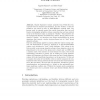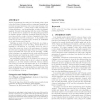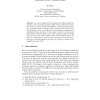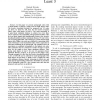19 search results - page 2 / 4 » A Note About the Traceability Properties of Linear Codes |
EUROCRYPT
2003
Springer
13 years 10 months ago
2003
Springer
Abstract. Digital Signatures emerge naturally from Public-Key Encryption based on trapdoor permutations, and the “duality” of the two primitives was noted as early as Diffie-He...
STOC
2009
ACM
14 years 5 months ago
2009
ACM
Linear programming decoding for low-density parity check codes (and related domains such as compressed sensing) has received increased attention over recent years because of its p...
EUROCRYPT
2000
Springer
13 years 9 months ago
2000
Springer
In a series of papers Patarin proposes new efficient public key systems. A very interesting proposal, called 2-Round Public Key System with S Boxes, or 2R, is based on the difficul...
GLOBECOM
2006
IEEE
13 years 11 months ago
2006
IEEE
— In this paper we present protograph codes with a small number of degree-3 nodes and one high degree node. The iterative decoding threshold for proposed rate 1/2 codes are lower...
JSA
2007
13 years 5 months ago
2007
— Hardware implementations of cryptographic algorithms are vulnerable to fault analysis attacks. Methods based on traditional fault-tolerant architectures are not suited for prot...




